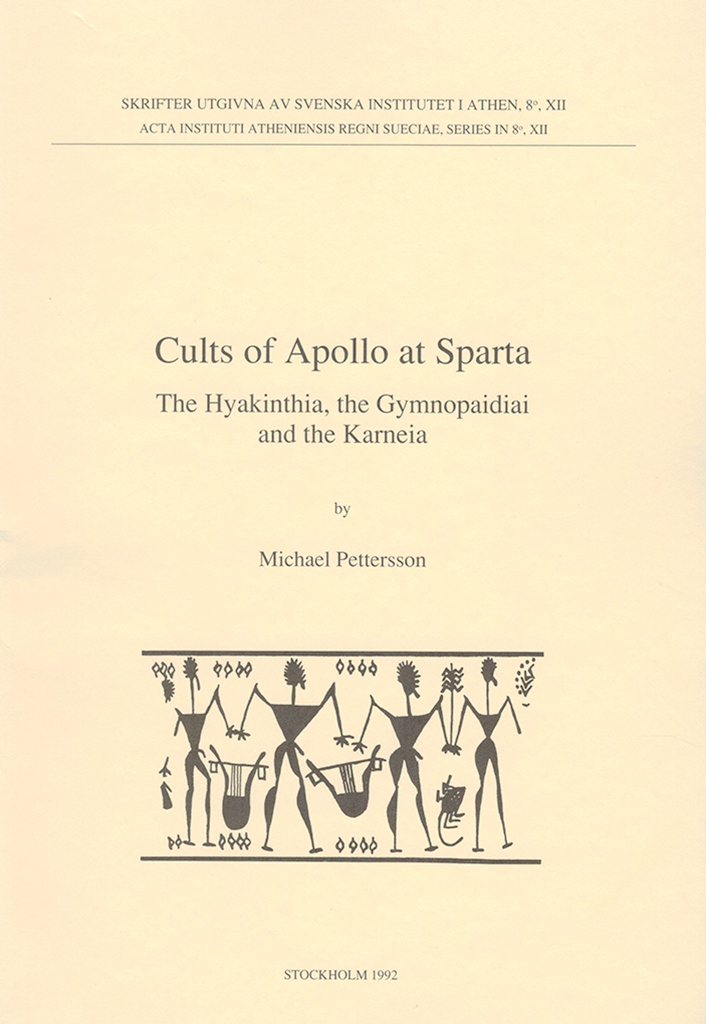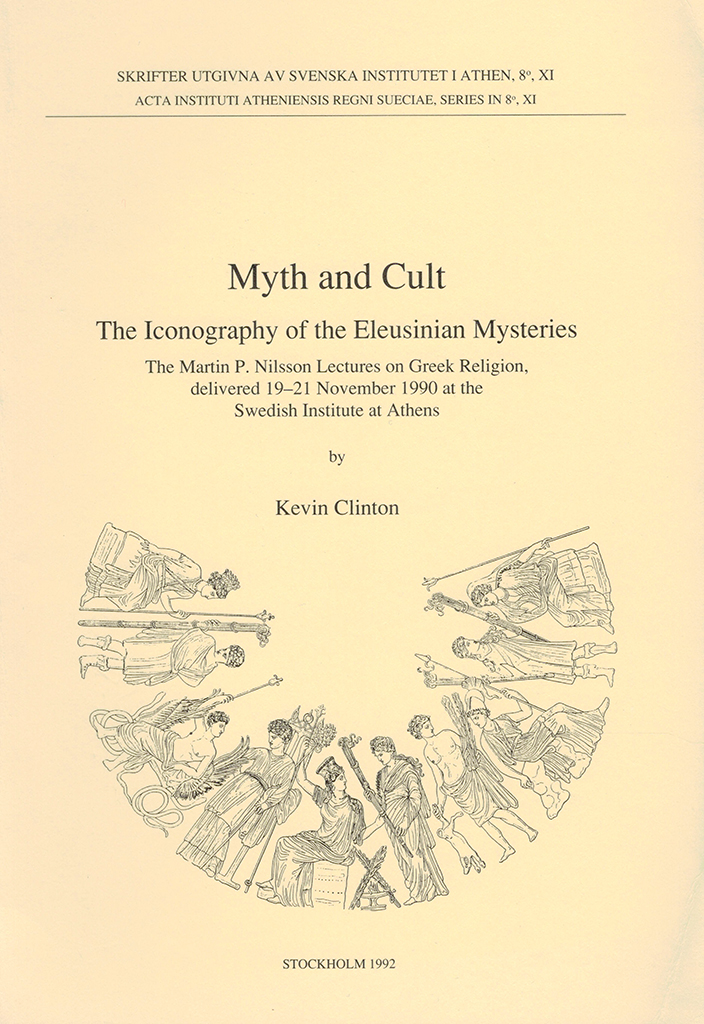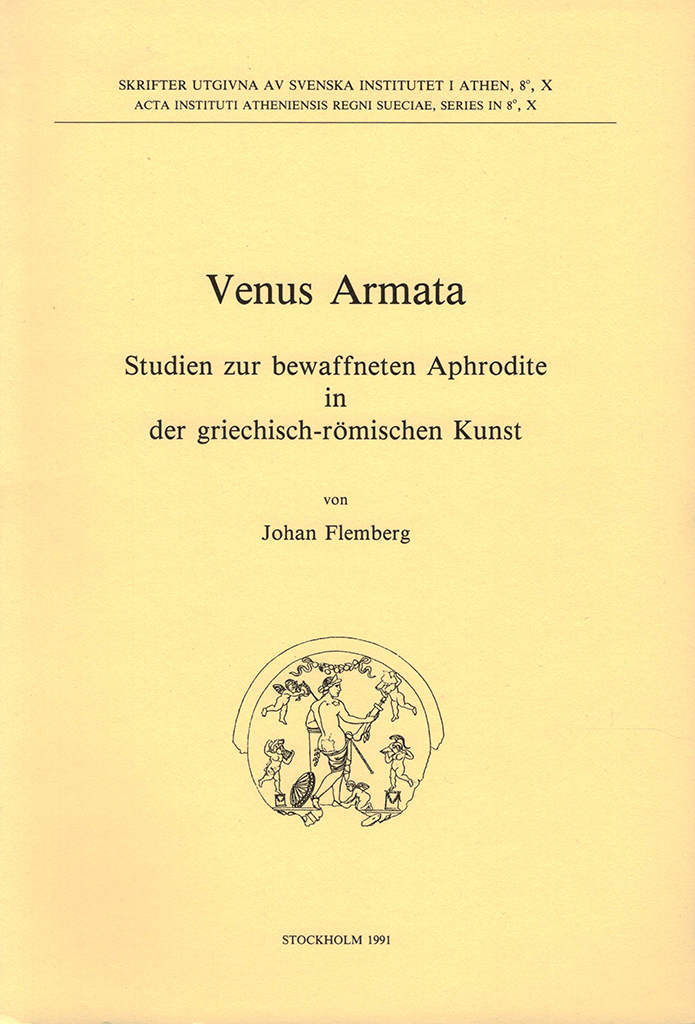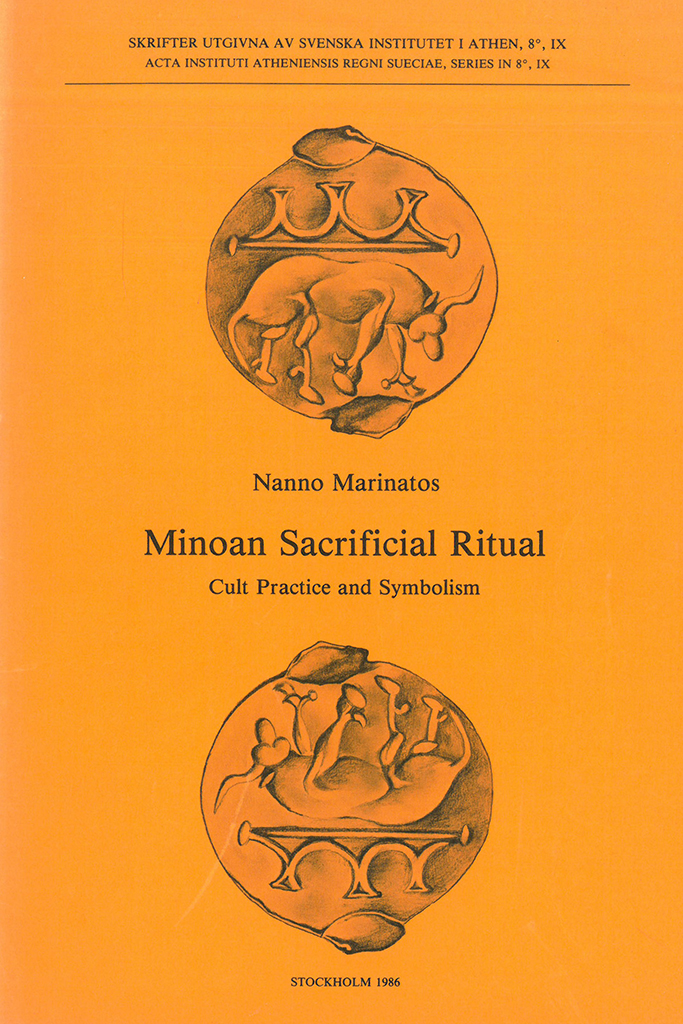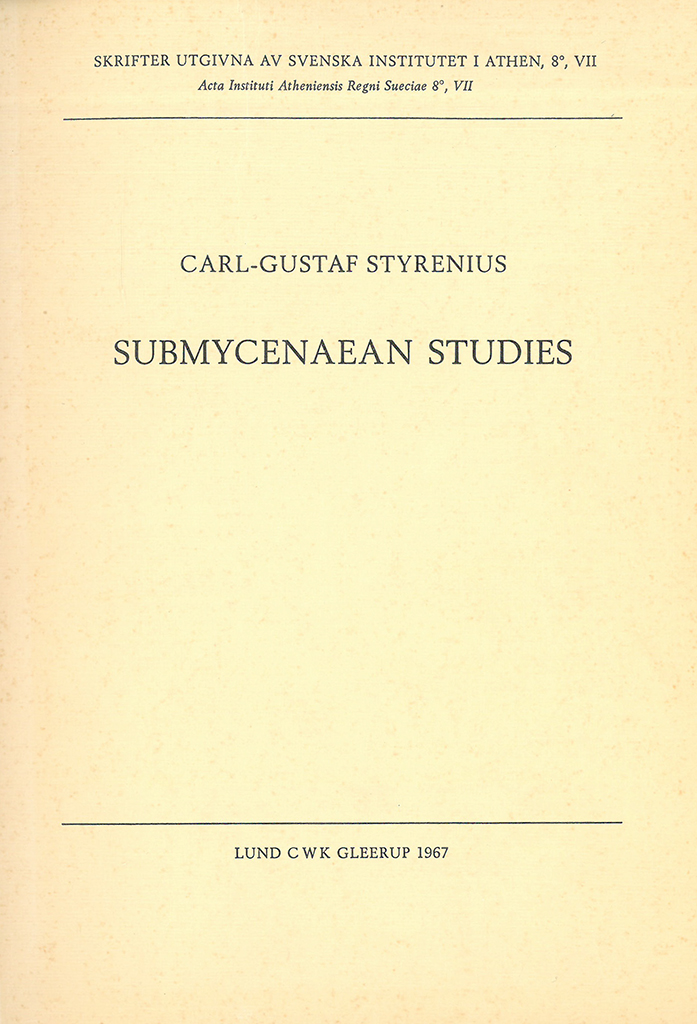Ancient Greek cult practice from the epigraphical evidence. Proceedings of the Second International Seminar on Ancient Greek Cult organized by the Swedish Institute at Athens, 22–24 November 1991 Edited by Robin Hägg. Published by the Swedish Institute at Athens. Distributed by Astrom Editions. Bibliographical information Robin Hägg, ed., Ancient Greek cult practice from the epigraphical evidence. Proceedings of the Second International Seminar on Ancient Greek Cult organized by the Swedish Institute at Athens, 22–24 November 1991 (Skrifter utgivna av Svenska institutet i Athen-8°, 13), Stockholm 1994. ISSN 0081-9921. ISBN 978-91-7916-029-6.
Distributed by Astrom Editions. See record at WorldCat. Cults of Apollo at Sparta. The Hyakinthia, the Gymnopaidiai and the Karneia By Michael Pettersson In this study, the three cults of Apollo are regarded as a rite of passage. In the first three chapters, the evidence concerning each cult is reviewed and discussed. The two-part structure of the Hyakinthia is investigated as an expression of the cult as a rite of passage. The identity of Hyakinthos is analyzed, starting with Pausanias’ description of the altar at the Amyklaion from the sixth century BC. It is argued that the bearded Hyakinthos, depicted on one relief, indicated a mature man and not the youth who was loved by Apollo, while the scene with Hyakinthos and Polyboia was associated with female initiation. Hyakinthos is presented as an ancestral figure, whose death was commemorated as part of a rite of initiation. The Gymnopaidiai was chiefly connected with the performances of choruses. The role of choreia in Spartan culture and religion is examined. The nakedness of the participants in this cult is viewed as a symbolic expression of the liminal stage which the initiands went through. The Karneia is regarded as the post-liminal phase of the…
Distributed by Astrom Editions. See record at WorldCat. Myth and cult. The iconography of the Eleusinian Mysteries. The Martin P. Nilsson Lectures on Greek Religion, delivered 19–21 November 1990 at the Swedish Institute at Athens By Kevin Clinton Iconography serves as the starting part for the treatment of central aspects of the myth and cult of the Eleusinian Mysteries. The presence of the Mirthless Rock in artistic presentations, its location in the sanctuary, and its relation to the Callichoron Well provide a perspective for assessing the aetiological elements in the Homeric Hymn to Demeter and the relation of the Hymn to Eleusis. The Iconography of Eubouleus, Iakchos, and Eumolpos is established, and that of Triptolemos and Ploutos is discussed extensively. The importance of Eubouleus in artistic representations is seen to correspond to his importance in the Mysteries, and the identification of him in certain scenes reveals his function in the myth of the Mysteries. Discussion of his role in the Thesmophoria leads to an examination of the relation of the Mysteries to the Thesmophoria. The various roles of all these figures in artistic representations provide a basis for revised interpretations of several works of art, and these interpretations are exploited…
Distributed by Astrom Editions. See record at WorldCat. Venus Armata. Studien zur bewaffneten Aphrodite in der griechisch-römischen Kunst By Johan Flemberg In the first part of this study, the evidence for the Oriental origin of Aphrodite is reviewed and it is suggested that the armed Aphrodite was introduced in Greece during the Mycenaean era and possibly, similar to her Oriental counterparts, had some connection with kingship. Next, the literary and epigraphic evidence of the armed Aphrodite in Graeco-Roman times is collected (31 testimonia) and discussed. In chapter three, the monuments are dealt with, beginning with Archaic statuettes from Italy. Several interpretations of the Aphrodite from Epidauros are discussed, Hauser’s ‘Amyclaian’ hypothesis is rejected, mainly on chronological grounds. In the main, the chapter is an investigation of the statues representing the naked Aphrodite donning a sword. All the replicas of this type, as well as the representations on coins, are dealt with and several variants are discerned. The Nea Paphos replica, however, which shows the goddess with drawn sword, is considered to be an altered version of the main type. It is considered that the original was an under life-size, bronze statue, created ca. 100 B.C., probably in the area of…
Published by the Swedish Institute at Athens. Distributed by Astrom Editions. Minoan sacrificial ritual. Cult practice and symbolism By Nanno Marinatos Abstract The cult practice and symbolism of Minoan sacrifice ritual are examined in this monograph. The archaeological evidence is analyzed and suggestions are made concerning the type and place of sacrifice, location of cult meals and species of sacrificial animals. The iconographical evidence supplies additional information about the priesthood, manner of sacrifice and occasions during which animals were slaughtered. Several scenes from glyptic art are discussed where sacrificial ritual is presented as a pictorial metaphor. Certain symbols are isolated and their connection with sacrificial practice is established. Through a projective mechanism, the Minoans expressed not only the importance of animal sacrifice but their perception of it as an extension of the laws of nature. Contents Introduction Part 1. The archaeological and iconographical evidence Types of animals Place of sacrifice; altars Manner of sacrifice Libations Animal rhyta and libation tables Processions Burying and burning the sacrificial animal Cult meals The skull and horns of the sacrificial animal Occasion Symbolic representations Conclusions Part 2. Symbols on seals denoting sacrifice of animals Introduction The eight-shield The sacred garment The impaled triangle Types…
Narrative technique in ancient Greek romances. Studies of Chariton, Xenophon Ephesius, and Achilles Tatius By Tomas Hägg. Published by the Swedish Institute at Athens. Distributed by Astrom Editions. Bibliographical information Tomas Hägg, Narrative technique in ancient Greek romances. Studies of Chariton, Xenophon Ephesius, and Achilles Tatius (Skrifter utgivna av Svenska institutet i Athen-8°, 8), Lund 1971. ISSN 0081-9921.
Published by the Swedish Institute at Athens. Distributed by Astrom Editions. Submycenaean studies. Examination of finds from Mainland Greece with a chapter on Attic Protogeometric graves By Carl-Gustaf Styrenius Preface (excerpt) The main part of the present study will be devoted to an examination of the Submycenaean and Protogeometric graves in Attica, a subject suggested to me by my Professor, Einar Gjerstad. I will try to subdivide the Submycenaean period into several phases on the basis of the development of the pottery and the location of the graves in the Kerameikos. The validity of the subdivisions will be checked by comparing grave forms, burial customs and grave offerings in the different periods. The Protogeometric period will be examined a little more summarily and without any new division into phases. The reason for this is that most of the Protogeometric material from the Athenian Agora is still unpublished, and I will not anticipate the complete study of this subject in the Agora publication. I am most grateful to Mrs E.L. Smiths on for her kindness in allowing me to include all the unpublished Submycenaean and Protogeometric graves from the Agora in my study. In the second part of the book I…
Gedanke und Tat. Zur Erzählungstechnik bei Herodot, Thukydides, Xenophon und Arrian By Hugo Montgomery. Published by the Swedish Institute at Athens. Distributed by Astrom Editions. Bibliographical information Hugo Montgomery, Gedanke und Tat. Zur Erzählungstechnik bei Herodot, Thukydides, Xenophon und Arrian (Skrifter utgivna av Svenska institutet i Athen-8°, 6), Lund 1965. ISSN 0081-9921.
The dionysiac mysteries of the Hellenistic and Roman age By Martin P. Nilsson. Published by the Swedish Institute at Athens. Out of print. Bibliographical information Martin P. Nilsson, The dionysiac mysteries of the Hellenistic and Roman age (Skrifter utgivna av Svenska institutet i Athen-8°, 5), Lund 1957. ISSN 0081-9921.
Die Septuaginta und das Neue Testament. Stilstudien By David Tabachovitz. Published by the Swedish Institute at Athens. Out of print. Bibliographical information David Tabachovitz, Die Septuaginta und das Neue Testament. Stilstudien (Skrifter utgivna av Svenska institutet i Athen-8°, 4), Lund 1956. ISSN 0081-9921.

